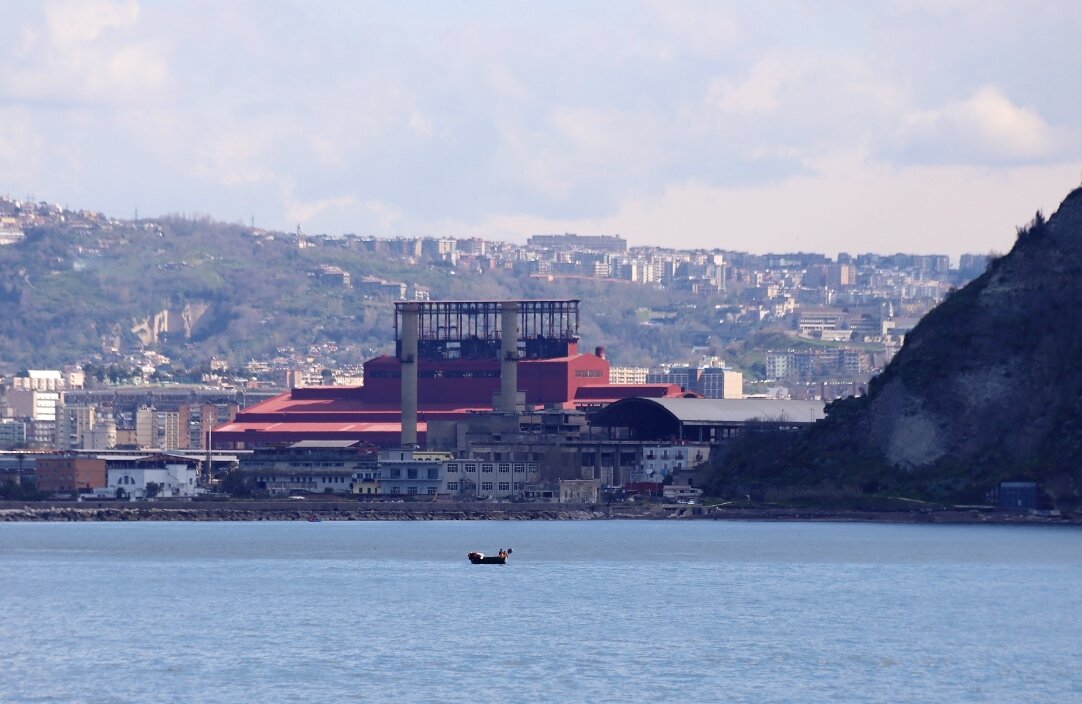Phlegraean fields (Campi Flegrei)
We continue the way on the Gulf of Naples by ferry, following the route Naples-Ischia.

From the Nisida island starts a unique geological area called "The Phlegraean fields". Due to the fact that the molten bowels are shallow from the surface, in the territory of the Phlegraean fields is a large number of fumaroles. Even in Roman times, the local hot springs and mud were used for medicinal purposes. The district of Naples, adjacent to the island of Nizida, is called Baloli, which comes from the word balneolis.

In the late eighties, the steel market crisis broke out and the company was closed. It is necessary to tell that the city administration quite quickly found to the thrown territories PR a manor, having started the project of transformation of industrial zone into the cultural and tourist center. Already in 1987 on the basis of old industrial buildings began construction of the city of Science (Città della Scienza). The Museum opened its doors to the public in 1996 and became the first interactive Museum in Italy. On March 4, 2013, 4 out of 6 buildings of the complex were destroyed by heavy fire. According to investigators, it was a deliberate fire - the fire arose simultaneously in several places. After the disaster, the fate of the Museum was attended not only by the city administration, but also many thousands of residents of Naples, the restoration of the Museum was joined by the Nobel Committee and famous scientists. Thanks to the funds raised, the first exhibition was opened in the temporary pavilion on November 17 of the same year. Now in the territory of the former metallurgical plant there is a construction of a new complex of buildings of the city of Science.

In the late eighties, the steel market crisis broke out and the company was closed. It is necessary to tell that the city administration quite quickly found to the thrown territories PR a manor, having started the project of transformation of industrial zone into the cultural and tourist center. Already in 1987 on the basis of old industrial buildings began construction of the city of Science (Città della Scienza). The Museum opened its doors to the public in 1996 and became the first interactive Museum in Italy. On March 4, 2013, 4 out of 6 buildings of the complex were destroyed by heavy fire. According to investigators, it was a deliberate fire - the fire arose simultaneously in several places. After the disaster, the fate of the Museum was attended not only by the city administration, but also many thousands of residents of Naples, the restoration of the Museum was joined by the Nobel Committee and famous scientists. Thanks to the funds raised, the first exhibition was opened in the temporary pavilion on November 17 of the same year. Now in the territory of the former metallurgical plant there is a construction of a new complex of buildings of the City of Science.

At the junction of the westernmost district of Naples and the municipality of Pozzuoli, on a high hill, in 1961 was opened a modern complex of buildings Of the air force Academy of Italy Naples. Academy of the Italian air force (Accademia Aeronautica). Before the higher school of military pilots were placed on the island Nizida.

Pozzoli the city was founded by the Greeks in 529 BC and was called Dicaearchia ("city of justice"). The result of the Samnite wars, the settlement came under the control of Rome in 194 BC the city received the status of a colony and the name Puteoli. Before our time came some buildings of those times - a huge amphitheatre, baths , market, necropolis.

The area of the Phlegraean fields literally floats on the surface of magma, which causes fluctuations in the level of the earth's surface - bradyseism. The old district of Pozzuoli, called Rione Terra, experienced this phenomenon quite recently. In 1970, tuff rock, where people settled for two centuries BC, began to fall quickly and the city hall of Pozzuoli decided to evacuate the area. Evil tongues say that the real reason for the evacuation was quite different - geologists did not give a catastrophic forecast, but through the media with the filing of the authorities spread horror stories about flooding the territory. In fact, the authorities used the natural phenomenon as an excuse to eliminate the slums of Rione Terra, who were the hotbed of the unsanitary conditions. Anyway, but after the earthquake of 1980, the earth's stronghold has restored its former level, and over time, the authorities began to give permission for construction in a closed area. The ruins slowly put in order and in 2014 the area became available for living and another tourist attraction Pozzuoli.

